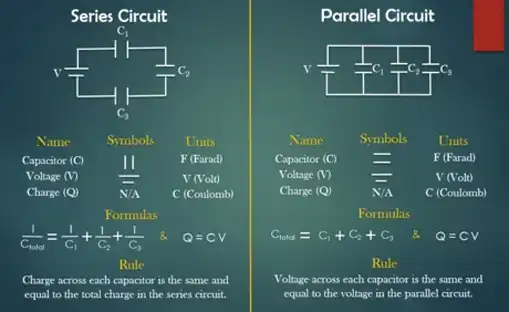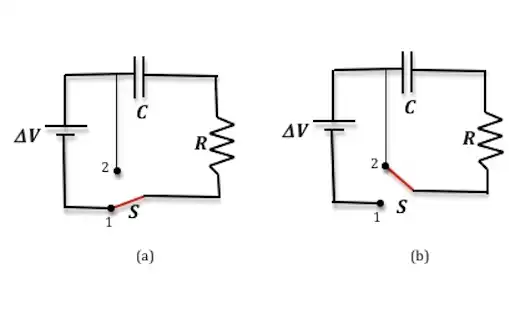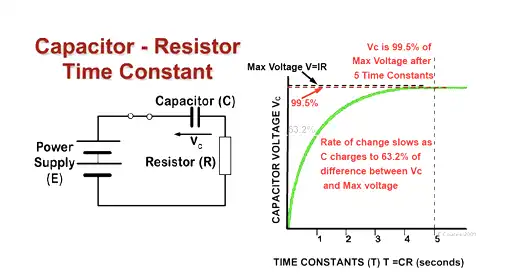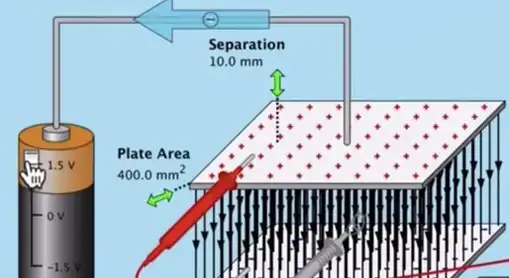In the realm of electronics, capacitors play a vital role in storing and releasing electrical energy. Knowing how to charge a capacitor properly is essential for anyone delving into electrical circuits, whether you’re a hobbyist, a student, or a seasoned professional.
This guide is designed to walk you through the process step by step, ensuring a clear understanding of the concepts involved.
Understanding Capacitors
What is a Capacitor?
A capacitor is a passive electronic component that stores electrical energy in an electric field. It consists of two conductive plates separated by an insulating material known as a dielectric.
Types of Capacitors
Explore the various types of capacitors, including ceramic capacitors, electrolytic capacitors, tantalum capacitors, and more. Each type has its unique characteristics and applications.
Capacitor Symbols and Notations
Familiarize yourself with the symbols used to represent capacitors in circuit diagrams. Understanding these symbols is crucial for interpreting circuit schematics accurately.
How Does Capacitor Charging Work?
Capacitor charging involves the process of storing electrical energy in a capacitor. When a capacitor is connected to a power source, such as a battery or a power supply, current flows into the capacitor, causing it to charge.
The charging process is governed by the relationship between voltage, current, and capacitance. As current flows into the capacitor, it builds up a voltage across its terminals. This voltage gradually increases until it reaches the same level as the voltage of the power source.
The rate at which a capacitor charges depends on its capacitance and the resistance of the circuit through which it is charging. A larger capacitance value will result in a slower charging process, while a smaller capacitance value will lead to a faster charge buildup.
Additionally, the charging process is influenced by the presence of a dielectric material between the capacitor plates. The dielectric material serves to insulate the plates and enhances the capacitor’s ability to store charge by increasing its capacitance.
Capacitor charging is a fundamental aspect of electronics, allowing capacitors to store electrical energy for use in various circuits and applications. Understanding how capacitor charging works is essential for designing and troubleshooting electronic circuits effectively.
Charging Capacitors in Series and Parallel

When capacitors are connected in series or parallel configurations, their charging behavior can vary significantly. Understanding how capacitors charge in these arrangements is essential for designing circuits and predicting their performance.
Charging Capacitors in Series:
In a series configuration, capacitors are connected end-to-end, forming a single path for current flow. When charging capacitors in series, the same current flows through each capacitor due to the series connection. However, the voltage across each capacitor is not the same.
To charge capacitors in series, the total voltage applied across the circuit is divided among the capacitors based on their capacitance values. Capacitors with larger capacitance values will experience less voltage drop, while capacitors with smaller capacitance values will have a greater voltage drop.
As a result, charging capacitors in series leads to an unequal distribution of voltage across the individual capacitors. The total charge stored in the series combination of capacitors is the same as if they were connected individually.
Charging Capacitors in Parallel:
In a parallel configuration, capacitors are connected side by side, creating multiple paths for current flow. When charging capacitors in parallel, each capacitor receives the same voltage from the power source, but the current is divided among them based on their individual capacitance values.
Charging capacitors in parallel results in a cumulative effect on capacitance, where the total capacitance of the parallel combination is equal to the sum of the individual capacitances. As a result, the total charge stored in the parallel combination of capacitors is higher than that of a single capacitor.
In both series and parallel configurations, the charging time of capacitors depends on factors such as capacitance, charging voltage, and circuit resistance. Understanding how capacitors behave in series and parallel arrangements is crucial for optimizing circuit performance and ensuring proper charge distribution.
Methods of Capacitor Charging

Capacitors can be charged using various methods depending on the specific requirements of the application and the characteristics of the power source. Understanding the different methods of capacitor charging is essential for achieving optimal performance in electronic circuits.
Direct Current (DC) Charging:
DC charging is one of the most common methods of charging capacitors. In this method, a direct current (DC) power source is connected to the capacitor, allowing current to flow from the source into the capacitor.
During DC charging, the voltage across the capacitor gradually increases as charge accumulates on its plates. The rate of charging depends on factors such as the capacitance of the capacitor and the current supplied by the power source.
DC charging is widely used in various electronic devices and circuits, providing a reliable and straightforward means of energizing capacitors for storage and discharge.
Alternating Current (AC) Charging:
AC charging involves charging capacitors using an alternating current (AC) power source. Unlike DC charging, where current flows in one direction, AC charging involves periodic reversals of current direction.
During AC charging, the voltage across the capacitor fluctuates sinusoidally, following the waveform of the AC power source. The charging process depends on factors such as the frequency and amplitude of the AC signal, as well as the capacitance of the capacitor.
AC charging is commonly used in applications where a continuous and uniform charge is not required, such as in AC-powered electronic devices and systems.
Pulse Charging:
Pulse charging is a specialized method of charging capacitors using short-duration pulses of electrical energy. This method is often employed in high-energy applications where rapid charging is required.
During pulse charging, capacitors are subjected to short bursts of high-current pulses, allowing them to charge rapidly to high voltage levels. Pulse charging is commonly used in applications such as pulse power systems, electromagnetic launchers, and pulsed laser systems.
Pulse charging techniques require careful control of pulse parameters, including pulse width, amplitude, and repetition rate, to ensure safe and efficient charging of capacitors without damaging them.
Each method of capacitor charging offers unique advantages and considerations depending on the specific requirements of the application. By understanding these methods, engineers and designers can select the most suitable approach for their particular circuit or system.
How a Capacitor is Charged
How a Capacitor is Charged
Charging a capacitor involves the process of storing electrical energy within its structure. Let’s break down how this happens:
Connection to Power Source: Initially, the capacitor is connected to a power source, such as a battery or power supply. This establishes a pathway for current to flow into the capacitor.
Flow of Current: When the circuit is closed, current begins to flow from the power source into the capacitor. Electrons accumulate on one plate of the capacitor, while an equal number of electrons are drawn away from the other plate, creating an electric field between them.
Accumulation of Charge: As current flows into the capacitor, the voltage across its terminals gradually increases. This voltage represents the amount of electric potential energy stored in the capacitor.
Buildup of Voltage: The rate at which the capacitor charges depends on its capacitance (the ability to store charge) and the resistance of the circuit through which it is charging. A higher capacitance value or lower circuit resistance will result in a faster charge buildup.
Completion of Charging: Eventually, the voltage across the capacitor reaches the same level as the voltage of the power source. At this point, the capacitor is considered fully charged, and no more current flows into it.
Storing Electrical Energy: Once charged, the capacitor stores electrical energy in the form of an electric field between its plates. This stored energy can be released later when the capacitor is discharged.
Charging a capacitor involves the accumulation of electric charge on its plates when connected to a power source. Understanding this process is essential for working with capacitors in electronic circuits effectively.
How to Discharge a Capacitor Safely
Discharging a capacitor safely is crucial to prevent the risk of electrical shock or damage to equipment. Here’s a step-by-step guide on how to discharge a capacitor safely:
Turn off Power: Before attempting to discharge the capacitor, ensure that the power to the circuit is turned off and disconnected. This prevents any accidental recharging of the capacitor during the discharge process.
Verify Discharge: Use a voltmeter to verify that the capacitor is fully discharged. Place the voltmeter probes across the terminals of the capacitor and ensure that the voltage reading is zero. If any voltage is detected, continue with the discharge process.
Short Circuit Method: The most common method for discharging a capacitor is the short circuit method. Using an insulated screwdriver or discharge tool, bridge the terminals of the capacitor to create a short circuit. This allows the stored charge to dissipate quickly and safely.
Hold Discharge Position: Maintain the short circuit between the capacitor terminals for a few seconds to ensure complete discharge. Be cautious and avoid touching the metal parts of the screwdriver or discharge tool to prevent electrical shock.
Double Check Discharge: After discharging the capacitor, use the voltmeter again to verify that the voltage across the terminals is indeed zero. This double-check ensures that the capacitor is fully discharged and safe to handle.
Isolate Capacitor: Once discharged, isolate the capacitor from the circuit or remove it entirely if necessary. This prevents any accidental recharging of the capacitor and reduces the risk of electrical hazards during maintenance or repair work.
Dispose of Discharged Capacitor: If the capacitor is damaged or no longer needed, follow proper disposal procedures according to local regulations. Capacitors can still contain hazardous materials, so proper disposal is essential for environmental safety.
By following these steps, you can safely discharge a capacitor and minimize the risk of electrical accidents or damage to equipment. Always exercise caution and prioritize safety when working with capacitors or any other electrical components.
How Long Will a Capacitor Hold a Charge
How Long Will a Capacitor Hold a Charge
The duration for which a capacitor can hold a charge depends on various factors, including its capacitance, the circuit resistance, and any leakage currents present. Here’s an overview of these factors:
- Capacitance: The capacitance of a capacitor determines its ability to store charge. Capacitors with higher capacitance values can store more charge and therefore hold it for longer periods. Conversely, capacitors with lower capacitance values will discharge more quickly.
- Circuit Resistance: The resistance of the circuit connected to the capacitor affects the rate of discharge. A higher circuit resistance will slow down the discharge process, allowing the capacitor to hold its charge for a longer time. Conversely, lower circuit resistance will result in faster discharge.
- Leakage Currents: In real-world scenarios, capacitors may experience leakage currents due to imperfections in their construction or the presence of contaminants. These leakage currents slowly drain the stored charge from the capacitor, reducing the time it can hold a charge.
In ideal conditions, a capacitor can theoretically hold its charge indefinitely. However, in practical applications, factors such as leakage currents and parasitic capacitances limit the duration for which a capacitor can retain its charge.
Additionally, the discharge characteristics of a capacitor follow an exponential decay curve, where the voltage across the capacitor decreases over time according to a mathematical function. The time it takes for the voltage to drop to a certain percentage of its initial value is known as the discharge time constant.
How Many Time Constants for a Capacitor to Fully Charge

The time it takes for a capacitor to fully charge depends on its RC time constant, where R represents the resistance in the circuit and C represents the capacitance of the capacitor.
To determine the time it takes for a capacitor to fully charge, you can use the formula:
Where:
- ( \tau ) (tau) is the time constant.
- ( R ) is the resistance in the circuit.
- ( C ) is the capacitance of the capacitor.
In general, it takes approximately 5 time constants (( 5\tau )) for a capacitor to reach about 99% of its fully charged state. After this duration, the capacitor is considered effectively fully charged for practical purposes.
So, to calculate the time it takes for a capacitor to fully charge, multiply the time constant (( \tau )) by 5:
This calculation provides an estimate of the time required for the capacitor to reach its maximum charge level in a given circuit.
Safety Precautions and Best Practices
Working with capacitors, especially when charging or discharging them, requires careful attention to safety protocols to prevent accidents and ensure personal well-being. Here are some essential safety precautions and best practices to follow when handling capacitors:
Understanding Capacitor Ratings:
Before working with capacitors, it’s crucial to understand and adhere to their voltage ratings, capacitance values, and temperature limits. Exceeding these ratings can lead to capacitor failure, release of hazardous substances, or even explosion.
Discharging Capacitors Safely:
Always discharge capacitors before handling them to avoid the risk of electrical shock. Use a discharge tool or resistor to safely dissipate stored charge from the capacitor terminals. Never short-circuit capacitors directly, as this can cause sparks or damage to the capacitor.
Wearing Protective Gear:
When working with capacitors, wear appropriate protective gear, including insulated gloves and safety glasses, to protect yourself from electrical hazards. Insulated tools should also be used to handle capacitors safely.
Avoiding High-Voltage Circuits:
Exercise caution when working with high-voltage circuits, as capacitors in these circuits can store significant amounts of electrical energy. Take extra precautions and follow established safety procedures to minimize the risk of injury or equipment damage.
Checking for Residual Charge:
Before touching capacitors, always double-check for any residual charge that may remain stored in them. Use a voltmeter to measure the voltage across the capacitor terminals and ensure that it has been fully discharged.
Handling Capacitors with Care:
Handle capacitors carefully to avoid mechanical damage or stress that could compromise their integrity. Avoid dropping or subjecting capacitors to excessive force, as this can lead to internal damage or short circuits.
Following Manufacturer Guidelines:
Refer to the capacitor manufacturer‘s guidelines and specifications when working with capacitors to ensure proper handling and operation. Adhering to manufacturer recommendations helps maintain safety and reliability.
By following these safety precautions and best practices, you can minimize the risks associated with working with capacitors and ensure a safe and productive working environment. Remember that safety should always be the top priority when dealing with electrical components and circuits.
How to Calculate Capacitor Charge

How to Calculate Capacitor Charge
Calculating the charge stored in a capacitor involves a straightforward formula that takes into account the capacitance of the capacitor and the voltage across its terminals.
Here’s the formula for calculating capacitor charge:
Where:
- Q is the charge stored in the capacitor (measured in coulombs).
- C is the capacitance of the capacitor (measured in farads).
- V is the voltage across the capacitor terminals (measured in volts).
To calculate the charge stored in a capacitor, follow these steps:
- Determine Capacitance (C): Identify the capacitance value of the capacitor. This information is typically provided in the capacitor’s datasheet or markings.
- Measure Voltage (V): Measure the voltage across the terminals of the capacitor using a voltmeter. Ensure that the voltage measurement is taken while the capacitor is connected to a power source or circuit.
- Apply the Formula: Once you have the capacitance (C) and voltage (V) values, plug them into the formula ( Q = C \times V ) to calculate the charge stored in the capacitor.
- Interpret the Result: The result of the calculation represents the total charge stored in the capacitor in coulombs. This value indicates the amount of electrical energy stored within the capacitor’s electric field.
By using the formula ( Q = C \times V ), you can accurately determine the charge stored in a capacitor based on its capacitance and the voltage across its terminals. This calculation is essential for designing and analyzing electronic circuits that involve capacitors, providing valuable insights into their behavior and performance.
How a Capacitor Stores Charge

A capacitor stores electrical charge by accumulating electrons on one of its plates while an equal number of electrons are removed from the other plate. This process creates an electric field between the plates, which stores energy in the form of potential energy.
When a capacitor is connected to a power source, such as a battery or power supply, electrons flow onto one plate of the capacitor while an equal number of electrons are drawn away from the other plate. This flow of electrons creates an imbalance of charge between the two plates, resulting in the buildup of an electric field.
As more electrons accumulate on one plate and are removed from the other, the voltage across the capacitor terminals increases. This voltage represents the amount of electric potential energy stored in the capacitor’s electric field.
The capacitance of a capacitor determines its ability to store charge. A capacitor with a higher capacitance value can store more charge for a given voltage, while a capacitor with a lower capacitance value stores less charge.
Once charged, a capacitor can hold its stored charge indefinitely, provided there is no leakage current or other factors causing discharge. The stored energy in the capacitor can be released when needed, allowing capacitors to act as energy storage devices in electronic circuits
Troubleshooting Capacitor Charging Issues
Common Charging Problems
Identify and troubleshoot common issues encountered during capacitor charging. From voltage spikes to insufficient charging, learn how to diagnose and address these problems effectively.
Voltage Leakage and Capacitor Aging
Understand the phenomenon of voltage leakage in capacitors and its implications for circuit performance. Learn how capacitor aging affects charging behavior over time.
Advanced Testing and Analysis Techniques
Explore advanced testing methods for assessing capacitor health and performance. From capacitance meters to impedance analyzers, discover tools used by professionals to evaluate capacitors.
Conclusion
In conclusion, mastering the art of charging a capacitor is essential for anyone working with electronic circuits. By understanding the principles behind capacitor charging and following best practices for safety and efficiency, you can tackle complex electrical projects with confidence.
FAQs
How do I know if a capacitor is fully charged?
A fully charged capacitor typically reaches the same voltage as the power source supplying it. You can use a voltmeter to measure the voltage across the capacitor terminals.
Can I charge a capacitor with a battery?
Yes, capacitors can be charged using batteries or any other direct current (DC) power source. However, it’s essential to ensure that the voltage rating of the capacitor is not exceeded during charging.
What happens if you overcharge a capacitor?
Overcharging a capacitor can lead to thermal runaway, where the capacitor heats up excessively and may fail catastrophically. It’s crucial to adhere to the manufacturer’s specifications and avoid exceeding the rated voltage during charging.
How long does it take to charge a capacitor?
The time required to charge a capacitor depends on several factors, including the capacitance value, the charging voltage, and the charging current. Using the formula for the time constant, you can calculate the approximate charging time.
Can capacitors hold a charge indefinitely?
While capacitors can store electrical energy for extended periods, they are not capable of holding a charge indefinitely. Over time, capacitors may experience self-discharge due to factors such as leakage currents and dielectric absorption.
Is it safe to touch a charged capacitor?
No, it is not safe to touch a charged capacitor without first discharging it. Capacitors can store significant amounts of electrical energy, posing a risk of electrical shock. Always follow proper safety procedures when working with capacitors.